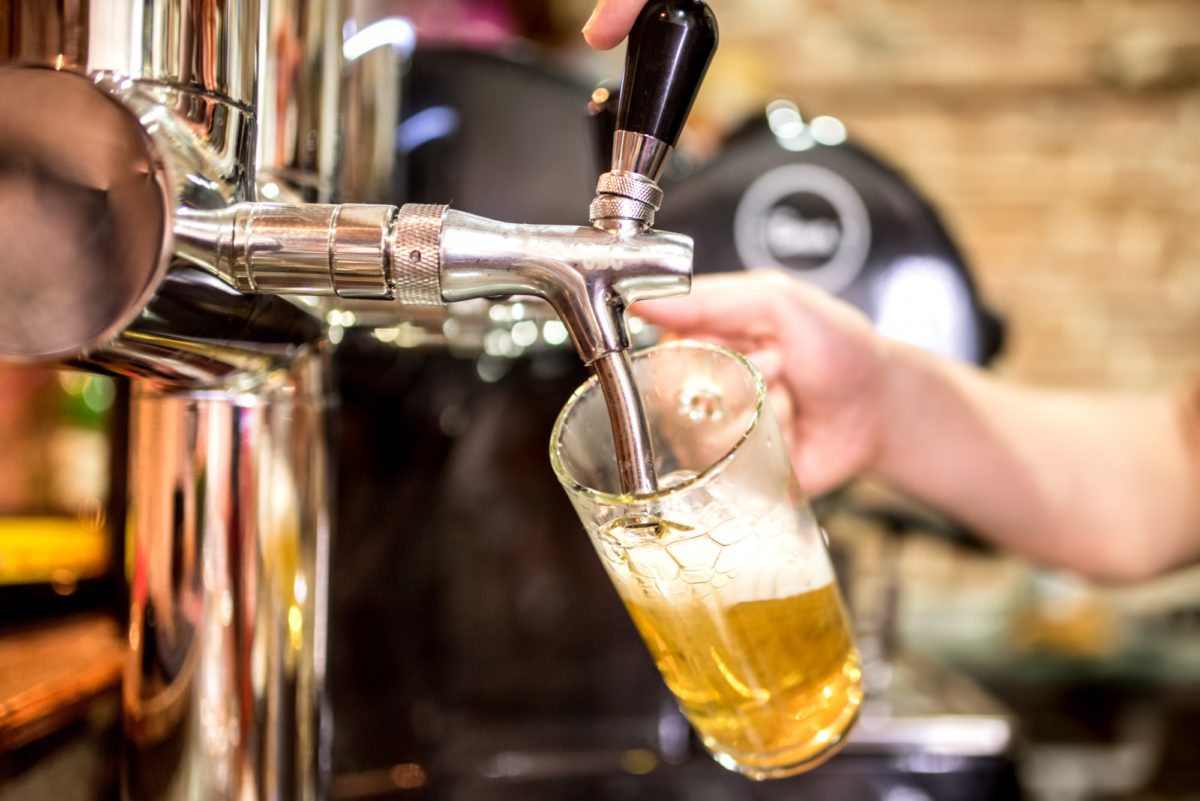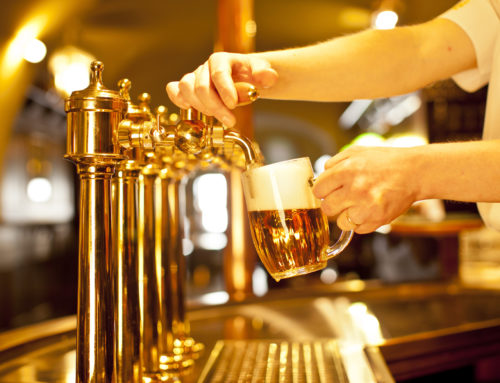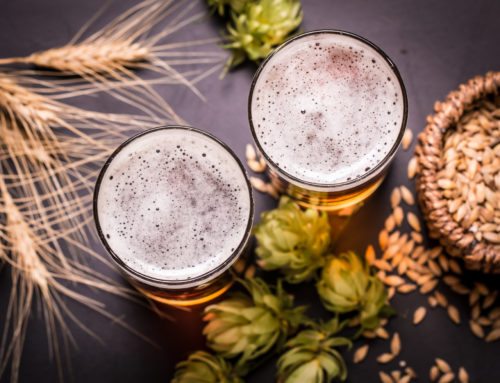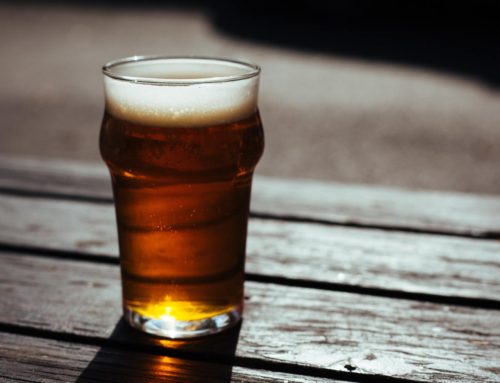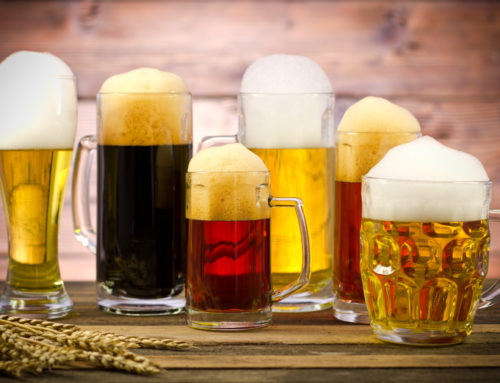If you haven’t tapped a keg since college – or ever – it’s about time you learnt!
Although you might associate kegs with the wild parties of your freshman year at university, kegs are actually one of the most grown-up and elegant ways to drink beer.
When you learn how to tap a keg, you’ll have a useful skill that’s sure to impress everyone at the party. And kegs aren’t just for parties anymore: this is also a great way to drink craft beer at home.
Let’s take a look at why we drink beer from kegs, and then go over how to tap a keg in a few simple steps. Keep reading to learn more!
The History of Kegs
Beer, as you may already know, has been around since ancient times. Let’s talk about the history that led us to the kegs and brews we know and love today.
How Beer Got Started
No one is exactly sure which culture or people first invented beer. However, historians are fairly sure that people started fermenting beverages almost as soon as they started growing grains, which was about 12,000 years ago.
This was the period when people transitioned from a hunter-gatherer lifestyle to living in stable communities based on agriculture. Chances are good that someone discovered fermentation by accident while storing barley, maize, or wheat, and the earliest version of beer was the result.
The strongest evidence of early beer brewing can be traced back at least to the Sumerian culture in Mesopotamia about 5,000 years ago. Archaeologists have found storage vessels in the area that still had the residue of brew on them. And so, the first predecessor to the keg was discovered.
Beer was beloved in the ancient day just as it is now – and may have also been necessary for survival. A hymn from 1800 B.C. was dedicated to Ninkasi (the name of the Sumerian goddess of beer, and one of today’s most popular craft breweries).
The hymn talks about a beer recipe that was brewed by priestesses. For ancient cultures, beer had a near-religious significance, probably because beer helped keep people alive.
At the time, modern sanitization methods were still far in the future. The rivers nearby would have quickly been contaminated by the waste of domesticated animals. Beer, however, was safe to drink, as the brewing process also helped kill any diseases in the water. It also contained vital nutrients.
New Developments in Brewing
Ancient beers tasted quite different from what we know and love today. Brewing underwent many different transitions through cultures like the ancient Greeks, Romans, and Egyptians.
However, during the Middle Ages, hops were added, making brews that tasted more like what we know as beer now.
As beer was updated, so were the ways to store it. During this time, brewing mostly happened in monasteries, using copper kettles to brew in larger batches than ever before.
Since people were living in communities of larger sizes now, bigger brewing operations could be sustained. Many monasteries doubled as beer factories, with equipment for malting, mashing, and fermentation. In fact, some of these monastery breweries looked shockingly like modern ones!
And to store these large quantities of brew, barrels were made for beer storage. These became the first modern predecessor to the keg. Instead of storing beer in communal clay or ceramic pots, as in the ancient days, beer was stored in large, durable barrels to keep brews for longer periods of time.
As hops were added to beer, it could be kept longer, increasing the need for large storage barrels. Hops are a natural preservative, so when the use of hops spread around Europe this truly revolutionized brewing.
Soon, European beer made its way to North America, as European explorers and later settlers traveled across the Atlantic.
Bottling Versus Barrels
For a long time, barrels or kegs were the main way to serve, store, and transport beer. From monasteries to commercial factories, the barrel made it easy to make beer in large batches, ship it, and sell it.
Beer was put into bottles as early as the 1500s, but only the wealthy could afford bottled beer. So for centuries, most people tapped casks or barrels whenever they wanted a brew.
At the time, drinking was a communal activity for everyone except, again, the very wealthy. Taking a barrel home was expensive, challenging, and time-consuming, so the people drank together in taverns and meetinghouses.
The Industrial Revolution brought factories, though, and with factories came cheaper, large-scale bottling operations. Plus, with more people working longer hours, hanging out at a tavern was no longer feasible for much of the population.
Bottles allowed people to take beer home after a long workday, and kept brewing operations in business by affording them a new way to sell their product.
A Low Point for Kegs
Needless to say, this development hurt the production and sales of beer in kegs.
Not only that, but as more immigrants arrived from other parts of Europe, Americans discovered a love for fizzy lagers. These beers were more difficult to serve in kegs than the ales that had previously been popular.
In the past, a beer engine had often been used to pump beer from a keg in the basement of a tavern. However, with more carbonated beers, the pumping mechanism created too much foam.
Eventually, people developed a new system that could maintain carbonation while reducing foam. But until that happened, the bottle started to take the place of the keg.
The method to tap a keg went through a few transitions before becoming the successful methods we know today. While compressed gas was used for a while in saloon refrigeration systems, the gas could oxidize the beer and give it a stale taste.
Pasteurization also became a common practice. This helped keep the quality intact, as beer was shipped further distances.
However, pasteurization could also hurt the taste of draft beer, taking away the brewery-fresh taste that had kept some people loyal to the keg. This, combined with the problems with storing and serving kegs, put another nail in the coffin of keg beer.
Beer consumers chose bottles at home over draft beer in a tavern, since draft beer tasted worse due to these storing and serving methods. Brewers were more likely to sell bottles, as consumers preferred them.
The push for at-home drinking was also a reaction to the post-Prohibition days. People were afraid that Prohibition might come again if public drinking made a resurgence, so they encouraged consumers to drink at home.
The Craft Beer Revolution
We might all still be drinking bottled brews more often if it weren’t for the craft beer revolution.
A shift in draft beer technology helped make this change. Compressed carbon dioxide that came prepackaged made tapping a keg much easier. Also, cold storage and shipping allowed North American brewers to do away with pasteurization, so draft beer can taste like it’s supposed to.
However, one of the biggest things that brought the keg back was the craft beer revolution. As American breweries became bigger and duller, home brewers started working to add variety to their home refrigerators.
Eventually, those homebrewers opened up their own small brewing operations. People quickly discovered that craft beer tasted better than the watered-down selections at many bigger brewing operations.
The combination of this revolution and newer, easier ways to store and tap a keg meant that the keg once more became a popular choice for drinking not just in bars, but at home.
Ready to learn how to tap a keg for yourself? Let’s take a look.
Tapping a Keg in 5 Easy Steps
Did you know that you can tap a keg at home in just a few simple steps? Get ready to forever change the way you drink and serve beer in your house.
1. Get Ready
You’ll want to do a little bit of prep work to ensure you have the right equipment to tap a keg.
Each keg has a certain kind of coupler system. You’ll need to make sure you get the right combination of coupler, tap, and pump.
Most kegs sold in America have a D coupler system. If you tap a keg of imported beer, you might see an S system or yet another lesser-known system instead.
When you buy the keg, the distributor can help you figure out where to get the correct parts. They may even sell them in-house.
2. Cool Off
Next, you’ll want to be sure to ice your entire keg.
We’ve all seen the party keg with just the bottom third stuck in a tub of ice. However, when you don’t ice the whole keg, you get cups full of foam on the first few pours.
To ice your keg, use a bucket that will cover the whole thing, or wrap a large garbage bag around the keg and stuff it with ice.
Your keg needs to chill for at least a few hours for best results. An hour before you plan to start pouring, ice the beer line and tap as well to avoid warm, foamy pours.
3. Make a Connection
Now, it’s time to take off the cardboard or plastic you might find around the tap fixture.
While the pump handle is in the “up” (off) position, you’ll align the lugs of the coupler with the matching keg valve openings.
Press down, and turn the system clockwise until you can’t turn it anymore – or about 90 degrees.
4. Test It Out
Now, press the pump handle down so it’s in the “on” position. Once you do this, gas can enter the keg, allowing beer to come out.
Double-check the connection and make sure you don’t see any bubble there. If you do, this means your connection isn’t right. You’ll have to turn the pump handle to the off position, disconnect it, and give it another try.
5. Enjoy a Draft Beer or Three
Now, your keg is ready to provide you with delicious brews.
If your keg is brand-new, it won’t even need to be pumped for your first few pours. The pressure inside the keg will let the beer start flowing.
All you need to do is press the valve on the end of the beer line in order to fill your cup. It’s normal that the first cup is foam, but you should get regular pours on the second or third try.
After a few drafts, you’ll want to start using the pump before you pour. This will build up the pressure in the keg to keep brews flowing smoothly.
Why Tap a Keg?
Although bottled beer offers a certain level of convenience, as you can see, it’s much easier than you might think to tap a keg.
When you tap a keg, you’re actually helping the environment. Although glass bottles can be recycled, the recycling process still uses precious resources.
If you tap a keg, you’re cutting way back on the environmental strain, since you get many pours from one keg. Plus, kegs aren’t thrown away or broken down after they’re used.
The truth is that people love drinking draft beer from a keg. Just look at the nearest bar that serves craft beer: most people don’t choose to drink their craft brews in bottles unless they have to.
You’ll have the option of serving beer in the appropriate kind of glass when you tap a keg. You can pour the perfect amount of beer for each glass size, whether it’s a 16-ounce pint or a tiny snifter. With a bottle, you’re limited to pouring 12 or 22 ounces at a time, making it harder to get the perfect pour.
Ready to Tap a Keg Yourself?
Tapping a keg is easy! Thanks to the many developments in keg technology, from the barrels of Middle Age monasteries to now, it’s easier than ever to tap a keg at home.
No matter what your favorite beer style is, you can find it in a keg. There are different keg sizes, too, in case you aren’t ready to commit to a full-sized one.
When you’re ready to try it for yourself, make sure to check out our products. We have everything you need to tap a keg with no trouble.

